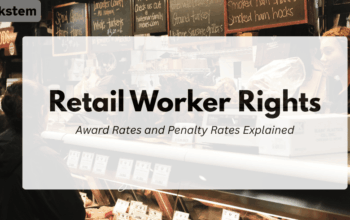What is superannuation?
Superannuation, often referred to as “super,” is a vital component of Australia’s retirement savings system. It’s a way for individuals to accumulate funds throughout their working lives, ensuring financial security during retirement.
In essence, superannuation is a long-term investment strategy that helps build a nest egg for their golden years. It’s mandatory for employers to contribute a percentage of an employee’s earnings into a super fund, making it a crucial part of everyone’s financial journey.
How superannuation came about?
The concept of superannuation dates back to the early 20th century, with the establishment of various funds by industries and unions to provide for workers after their retirement.
However, it wasn’t until the Superannuation Guarantee (SG) was introduced in 1992 that the modern superannuation system took shape.
Under the superannuation guarantee, employers have to pay superannuation contributions of 11% of an employee’s ordinary time earnings when an employee is:
- over 18 years, or
- under 18 years and works over 30 hours a week.
If eligible, the super guarantee applies to all types of employees including:
- full-time employees
- part-time employees
- casual employees.
Temporary residents are also eligible for super.
Super has to be paid at least every 3 months and into the employee’s nominated account.
This marked a significant milestone in Australia’s approach to retirement planning, encouraging a more structured and consistent approach to savings.
Types of super funds
There are several types of super funds available, each catering to different needs and preferences, which include:
- Retail Funds
Managed by financial institutions, these funds offer a wide range of investment options but may come with higher fees.
- Industry Funds
Run by employer associations or unions, these funds often have lower fees and can provide competitive returns due to their not-for-profit nature.
- Self-Managed Super Funds (SMSFs)
These allow individuals to have more control over their investments, but they come with greater responsibility and administrative requirements.
- Public sector super funds
Public sector funds are for government employees. They usually have a modest range of investment choices.
- Corporate Funds
Offered by employers for their employees, these funds may have tailored features and benefits.
What is MySuper?
MySuper is a type of product you can have with a super fund. It is a government initiative introduced to simplify the superannuation landscape. It’s a default fund option that aims to provide essential features and a standardised fee structure, making it easier for individuals to compare and select funds.
MySuper options typically have a simple investment strategy and reduced fees, ensuring that members have a basic level of protection and financial stability.
How to compare super funds
When comparing super funds, it’s crucial to consider factors such as fees, investment options, past performance, insurance offerings, and customer service. It’s advisable to assess a fund’s historical returns and understand its investment strategy to align with your risk tolerance and financial goals. Comparing different funds can help you make an informed decision and choose the one that best suits your needs.
How can Workstem assist you?
Workstem empowers individuals in effectively managing their superannuation by offering a user-friendly platform for comprehensive superannuation management, streamlined contribution management, ensuring a simplified and strategic approach to securing a comfortable retirement and financial confidence.
We support multiple Super funds, including Australian Super, Sunsuper, custom SMSFs and more, handling SG contributions and personal Super contributions. Our all-in-one platform streamlines payroll calculations by computing ordinary time earnings and superannuation based on the pre-set SG rate. Easily generate Super files for analysis, and receive error warnings for enhanced speed and accuracy.
Take control of your redundancy payment and more payroll issues today and experience the convenience of Workstem now!








